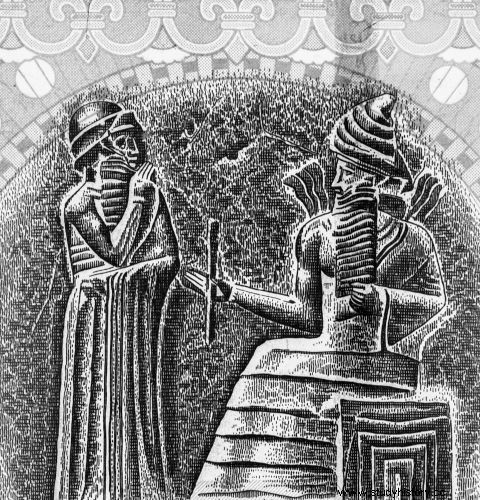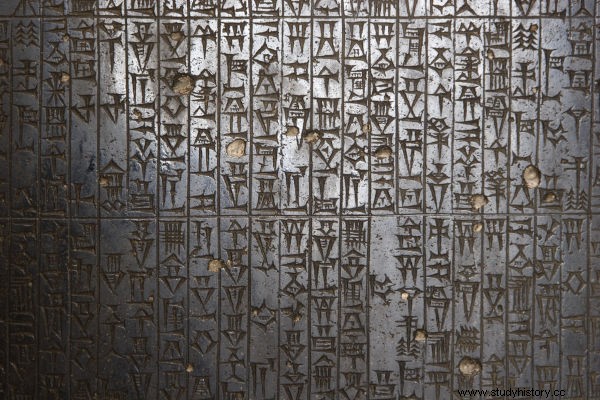The Code of Hammurabi , in a generic way, is understood as a code of laws that summarized a series of legal determinations that were traditional in Mesopotamia. It was made during the reign of Hammurabi, Babylonian king in the 18th century BC. It had a total of 282 articles, which were based on the principle of the Talion Law.
Access also :Babylonian Captivity—One of the Most Important Events in Hebrew History
What was the Code of Hammurabi?
The Code of Hammurabi was a compendium of laws that was created in Mesopotamia , more specifically during the reign of Hammurabi, king of the First Babylonian Empire, in the 18th century BC. It is commonly known as a penal code, although historians are reluctant to define it that way because it is not a penal code in the modern sense of the word.

This code is understood as a kind of summary of a series of legal traditions that existed historically in Mesopotamia. Basically, the Code of Hammurabi established forms of conduct for certain situations and punishments for certain offences. The name of the code makes direct mention of the person who supposedly made it or the king of the period in which it was made.
Hammurabi was king of Babylon from 1792 BC. to 1750 BC and responsible for forming the First Empire of Babylon. In the code itself, Hammurabi stated that these laws were intended to guarantee what was fairest for the people, should they enter into disputes with each other. Hammurabi still defined himself as king of justice and as a father to his subjects|1| .
The Code of Hammurabi was not the first compendium of laws created in Mesopotamia , since historians know of the existence of the Code of Ur-Namu, created around the 20th century BC. This code was of Sumerian origin and had much lighter punishments than those present in the Code of Hammurabi.
The Code of Ur-Namu introduced capital punishment for some offenses, such as robbery and murder, for example, and determined silver fines for most other offenses. The Code of Hammurabi, as we shall see, was based on the Law of Talion and offered punishments proportionate to the crime committed.
When we talk about the Code of Hammurabi, it is important to understand that, despite the harsh punishments established by this code, it is understood by historians as a great advance, as it was developed in a context in that Mesopotamia formed increasingly multiethnic kingdoms and cities.
From the point of view of the First Babylonian Empire, the Code of Hammurabi was important because it stood as a reference for conflict mediation . Historian Paul Kriwaczek presents the fact that disagreements in multi-ethnic societies such as Babylon could quickly turn into violent conflicts|2| .
Thus, the Code of Hammurabi was an essential tool to ensure the stability of the empire , as it established punishments for certain conduct, thus controlling the thirst for revenge of many and preventing the development of conflicts that could harm the order of the Babylonian empire.
The Code of Hammurabi was originally written in language Akkadian and it was recorded on a black diorite stele in cuneiform script, the script that was created by the Sumerians. This Mesopotamian record was recovered in excavations carried out where the city of Elam, present-day Iran, was located. The stele, which was over 2 meters high, is believed to have gone to Elam as war booty.
Login also :Sumerian literature — one of the oldest in the world
Principles of the Code of Hammurabi
As mentioned, the Code of Hammurabi was based on the Law of Talion, a principle that had as its central idea a punishment proportionate to the harm/offence committed . The Talion Law motto was “an eye for an eye, a tooth for a tooth ”, a suggestive motto that already gives us an idea of what he proposes.

All in all, the Code of Hammurabi has 282 laws, that dealt with different issues and addressed issues related to family, work, the price of goods, etc. The most discussed issue by the code, according to Paul Kriwaczek, were family matters, such as “engagement, marriage and divorce, adultery and incest, children, adoption and inheritance”|1| .
From the records of the Code of Hammurabi, we know today that there were three social classes in Babylon. These social classes were three:
- awilum , free men (a type of elite class);
- mushkenum , the nobles (a type of inferior class);
- wardum , the class of slaves.
Social classes are important elements of the Code of Hammurabi, as the severity of punishments could often vary, depending on the class of the person who committed the crime. In addition to classes, other factors that could cause punishments to vary in intensity were age and gender.
An important principle guiding the Code of Hammurabi was the idea of presumption from innocence . Whoever accused someone of a certain crime was obliged to prove his accusation; otherwise, Babylonian law stipulated punishment for the accuser. The first three articles in the code address exactly this issue.
Example:
1st – If someone accuses another, he imputes a spell, but cannot prove it, the one who accused must be killed|3| .
Login also :Persian civilization — one of the most important in antiquity
Articles of the Code of Hammurabi
As mentioned, the Code of Hammurabi has 282 articles. Let's see some examples of code approach to different subjects.
- Theft :
6th – If someone steals goods from God or the Court, he must be killed; and whoever received the stolen thing from him shall also be put to death|3| .
- Rights of Officers :
27th – If an official or a gregarious was taken prisoner in the defeat of the king, and then his field and his garden were given to another and he takes possession of them, if he reaches his village again, the field and the garden must be restored to him and he must take them back|3| .
- Marriage and Family :
137th – If a man wants to separate from a woman who gave him children, or from the wife who gave him children, he must return her dowry to that woman and give her part of the income from the field, from the garden and from her possessions, so that she can raise her children. If she has brought up her children, she shall be given a share of all that is bestowed on children, equal to a child's share. She can marry the man of her heart|4| .
- Deposit Agreements :
120º – If someone deposits his wheat in someone else's house and the wheat pile is damaged or the owner of the house opens the barn and subtracts the wheat or denies, in short, that the wheat has been deposited in his house, the owner of the wheat shall claim his wheat before God and the owner of the house shall return the wheat he took, without diminution, to its owner|3| .
- About work :
229th – If a builder builds a house for someone and doesn't do it correctly, and if the house he built falls down and kills its owner, that builder must be killed.
230th – If you kill the owner's child, the builder's child must be killed|4| .
- About offenses :
196º – If someone gouges out someone else's eye, they should gouge out their eye.
197º – If he breaks someone else's bone, should he break his bone|3| .
Notes
|1| KRIWACZEK, Paul. Babylon:Mesopotamia and the Birth of Civilization. Rio de Janeiro:Zahar, 2018, p. 228.
|2| Ditto, p. 230.
|3| Hammurabi's Code. To access, click here.
|4| KRIWACZEK, Paul. Babylon:Mesopotamia and the Birth of Civilization. Rio de Janeiro:Zahar, 2018, p. 229.
